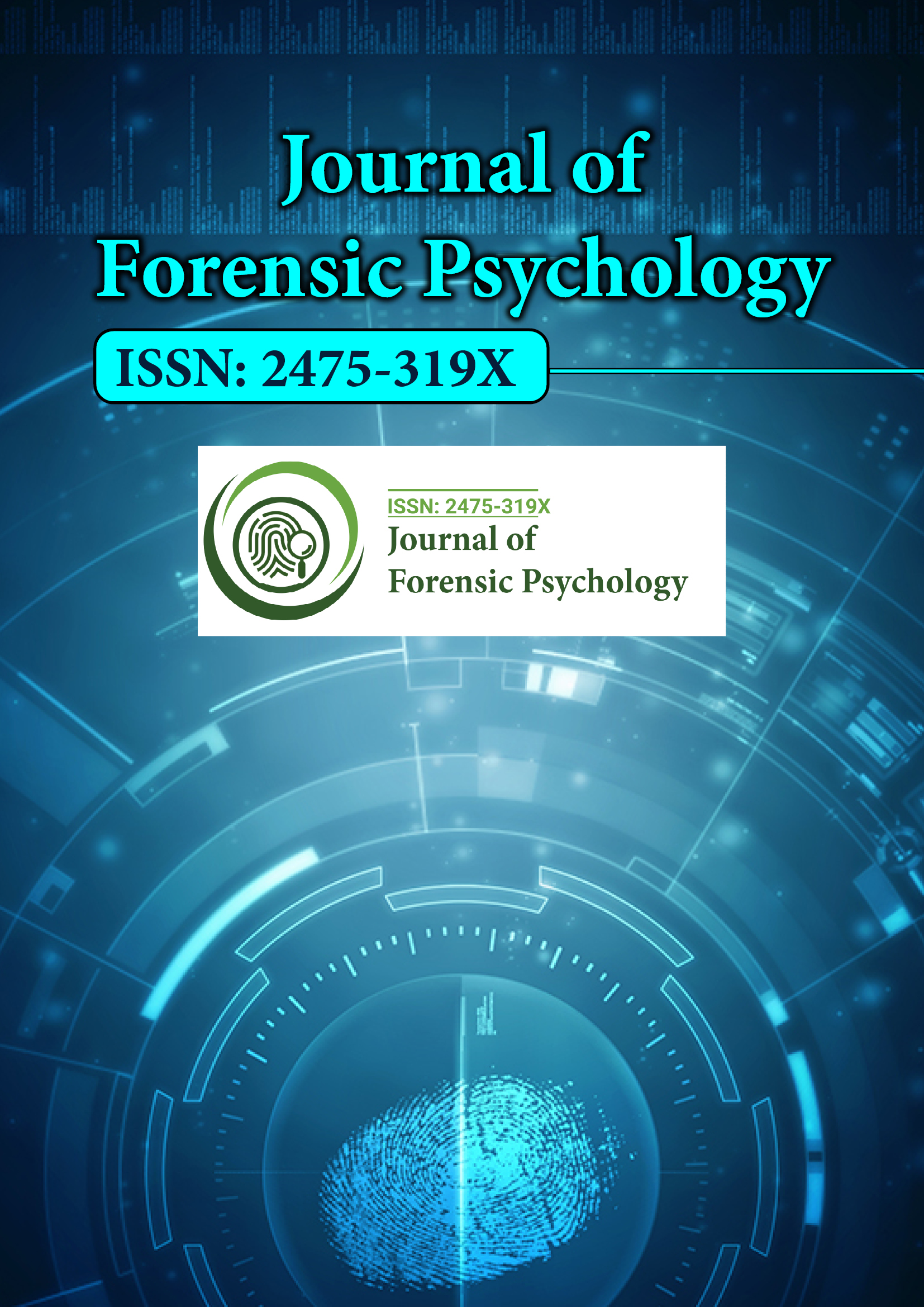Indexed In
- RefSeek
- Hamdard University
- EBSCO A-Z
- Publons
- Geneva Foundation for Medical Education and Research
- Euro Pub
- Google Scholar
Useful Links
Share This Page
Journal Flyer

Open Access Journals
- Agri and Aquaculture
- Biochemistry
- Bioinformatics & Systems Biology
- Business & Management
- Chemistry
- Clinical Sciences
- Engineering
- Food & Nutrition
- General Science
- Genetics & Molecular Biology
- Immunology & Microbiology
- Medical Sciences
- Neuroscience & Psychology
- Nursing & Health Care
- Pharmaceutical Sciences
Editorial - (2021) Volume 6, Issue 9
A Brief Note on Substance-related Disorder
Thomas Ling*Received: 09-Sep-2021 Published: 30-Sep-2021, DOI: 10.35248/2475-319X.21.6.e192
Description
Substance-related disorders, otherwise called substance use issues, can prompt immense social problems. It is observed that imply most prominent in people ages 18–25, with a higher probability happening in men contrasted with women, and metropolitan occupants compared with country inhabitants. Comprehensive general clinical offices hold 20% of patients with substance-related problems, potentially prompting mental issues later. More than half of people with substance-related problems frequently have a "double perception," where they are determined to have substance use, just as a mental analysis, the most widely recognized being significant sadness, behavioral condition, uneasiness issues, and dysthymia.
Substance use, otherwise called drug use, is designed utilization of a substance (drug) in which the client burns through the drug in amounts or with strategies that are dangerous to themselves or others. The medications utilized are generally associated with levels of substance inebriation that modify the judgment, discernment, consideration, and actual control, not related to clinical impacts. It is generally an expected idea that the super utilized substances are unlawful medications and liquor, yet it is eventually more general than doctor-prescribed medications tobacco is the most common issue.
Illicit drug use indications or practices incorporate, among others:
• Feeling that you need to utilize the medication routinely — day by day or even a few times each day
• Having extreme inclinations for the medication that square out some other contemplations
• Over time, requiring a large amount of the medication to get a similar impact
• Taking immense measures of the medication throughout a more extended timeframe than you planned
• Making sure that you keep a stock of the medication
• Spending cash on the medication, even though you can't bear the cost of it
• Not meeting commitments and work liabilities, or scaling back-friendly or sporting exercises on account of medication use
• Continuing to utilize the medication, even though you know it's messing up your life or causing you physical or mental mischief
• Doing things to get the medication that you ordinarily wouldn't do, like taking
• Driving or doing other dangerous exercises when you're affected by the medication
• Spending a decent arrangement of time getting the medication, utilizing the medicament, or recuperating from the impacts of the medication
• Failing in your endeavors to quit utilizing the medication
• Experiencing withdrawal manifestations when you endeavor to quit taking the medication
Substance-induced disorders incorporate ailments that can be immediately credited to the utilization of a substance. These conditions incorporate inebriation, withdrawal, substanceinduced mood disorders, substance-actuated psychosis, and substance-induced mood disorders.
Substance use problems incorporate substance use and substance reliance. In DSM-IV, the conditions are officially analyzed as either, yet it has been suggested that DSM-V join the two into a solitary condition called "Substance-induced mood disorders.
Physiological vandalization is regularly the most self-evident, saw as a strange situation influencing the body of an organic entity: For example, there are a few known liquor actuated sicknesses. Substance use is likewise regularly connected with untimely maturing, brain impairment, and severe danger of irresistible illnesses because of a debilitated immune system.
Continuous use has been associated with personality transposes like depression, paranoia, anxiety be related to intellectual distress can be expected then stated substance use concurs with behavioral conditions, for example, marginal behavioral condition. It has additionally now been connected to severe cerebrum harm prompting a failure to control practices, which could clarify why many individuals who use substances proceed to foster addictions.
Substance use is most probably considered as a negative in the public insight. The individuals who take part in such practices can frequently be dependent upon social segregation. The utilization of many medications can prompt criminal feelings, regardless of whether the authentic medicament is illicit or individuals who use them utilize unlawful techniques to finance their substances. Almost certainly, somebody will participate in criminal or hostile social conduct when affected by a medication.
Citation: Ling T (2021) A Brief Note on Substance-related Disorder. J Foren Psy.6:e192
Copyright: © 2021 Ling T. This is an open access article distributed under the terms of the Creative Commons Attribution License, which permits unrestricted use, distribution, and reproduction in any medium, provided the original author and source are credited.

